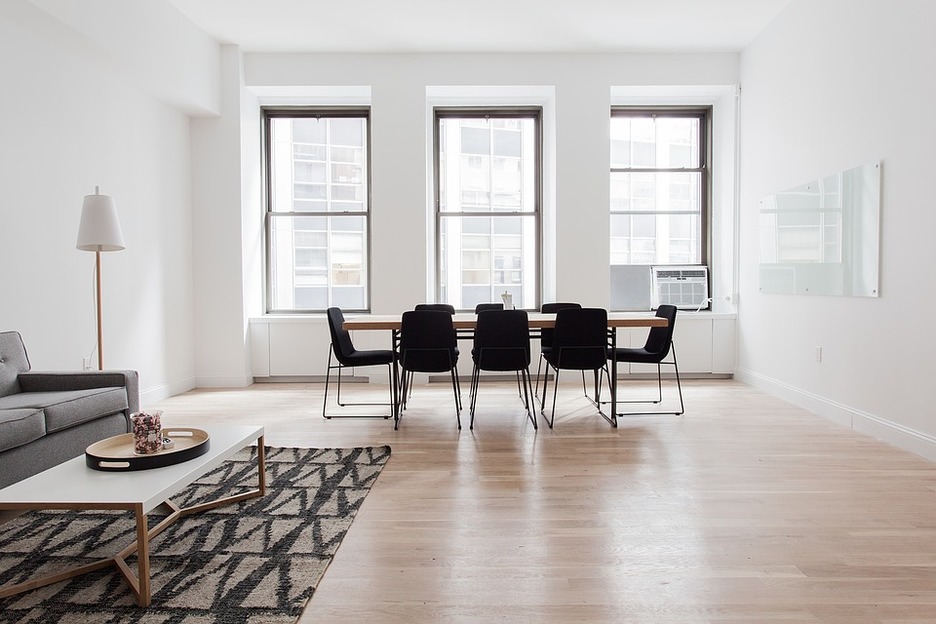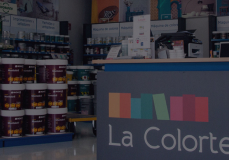Testing the characteristics of the floor paint beforehand, together with closely following the application steps, is one of the best ways to invest in the conservation and treatment of floors to prolong their resistance and make them look as good as new.
Montó Pinturas has an extensive catalogue of floor paintsthat adapt to the needs of each type of floor, offering innovative, easy-to-apply and environmentally friendly products.
STEPS FOR CHOOSING AND APPLYING THE RIGHT FLOOR PAINTTo begin a renovation process on a floor, it is best to follow these three steps, so as to ensure that all the tasks necessary for the treatment of the floor are performed and that the application of the paint can be performed more easily, with a more durable and aesthetic finish.

Evaluation of the condition and material of the flooring is the step that will provide us with the most information about the needs of the floor and the attention it requires for activity to be carried out in that space.
If it is a floor of a new build, it is important to know what that space will be used for: industry, installation sports... to determine what care and preventive measures you need, making sure to choose the paint that best protects it from dirt, moisture or possible cracks.
If the floor is in an old building or an area to be renovated. The first step will be to analyse the damage to the floor, related to damp, leaks, possible cracks or dilated joints, as well as the existence of stains that will affect the application of new coats of paint.
Damp is a floor’s greatest enemy. As a general rule, paint should not be applied to floors with more than 4% moisture. In new construction, it should not be applied until after the 28 days that the concrete needs to set completely. The floor must be completely isolated: possible migrations of moisture from the subsoil must be monitored, as must the water table in the area,... If necessary, a vapour barrier must be applied.
SURFACE PREPARATIONIn the case of concrete floors, whether new or with previous coatings, it will be necessary to ensure adhesion using mechanical means (sanding, milling...) or by using chemical means. It will be necessary to level the surface and leave pores open. This way, possible cracks will also be visible so that they can be treated and roughness can be repaired with fine mortar.
The pressure washing together with vacuuming of the area will remove all the stains and traces of dust, so that the the paint has a better chance of adhesion.
In many cases it will be necessary to apply a primer that will serve as a bonding or moisture regulating bridge. The choice of primer can be determined by the finishing product to be used. A very versatile option can be the product epoxy floor primer by Montó.

Once the floor has been treated, properly sanitised and cleaned so that there are no traces of dust or other materials, it is time to apply the most suitable treatment paints for each type of material.
The experts at the Montó group can advise you on the different ranges of products for the different types of floor to be treated and the purpose of each of the formulas created.
In the case of choosing paints for indoor concrete floors the epoxy paints are best. These are two-component paints with high mechanical resistance, ideal for parking lots and industrial floors with high mechanical requirements. There is the possibility of adding roughness so that the floor doesn't get too slippery. It is also common to make the coating reflective.
There are several possible options, water and solvent based products with different layer thicknesses: thin layer paints, self-levelling paints...
Epoxy paints are not resistant to solar action and UV rays. For exterior concrete and cement floors where high resistance is needed, polyurethane based products are the best option.
For signage on asphalt and for road marking, the most effective option is acrylic paints. These are treatments that are resistant to UVA rays and moisture while providing good adhesion, so the Pavimont line is recommended in these cases.
The product, surface preparation and use options are numerous. It is recommended to check the features and components of each product to check certain details, such as:
- The suitability for the different surfaces: concrete, cement, asphalt, ceramic,..
- The finish offered by the paint: gloss, matt, satin, reflective ...
- The drying time for the correct application of the different layers of coverage.
Always consider the use of space, to assess the needs of resistance, waterproofing, grip or visibility of signs.


